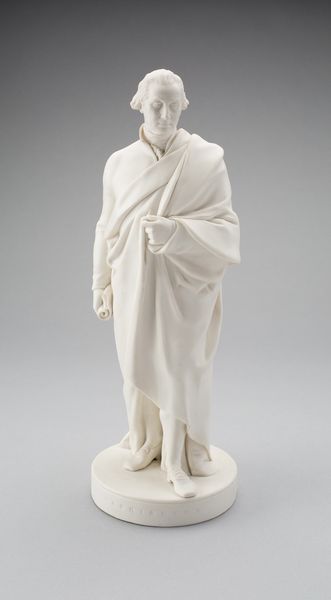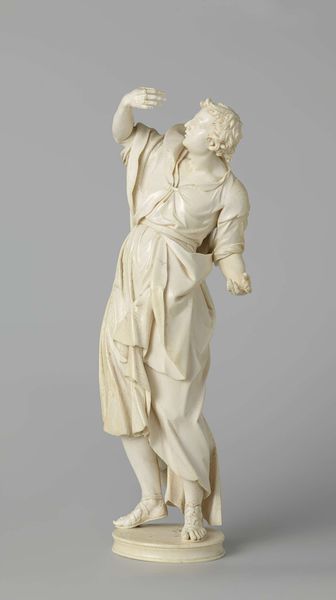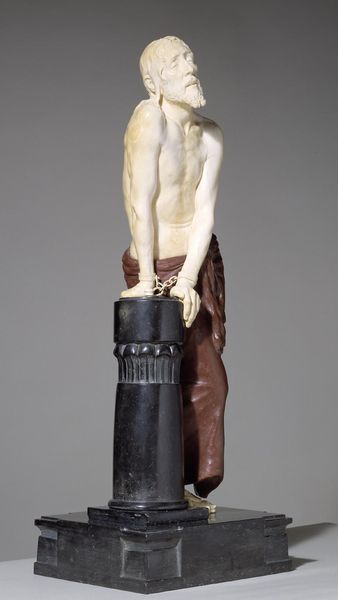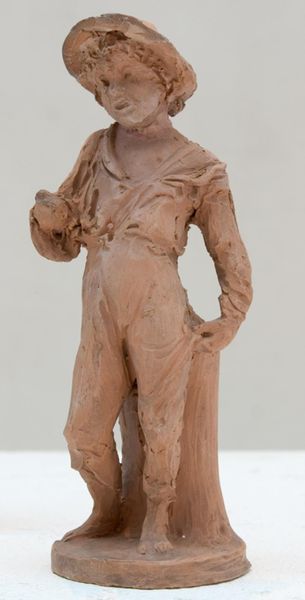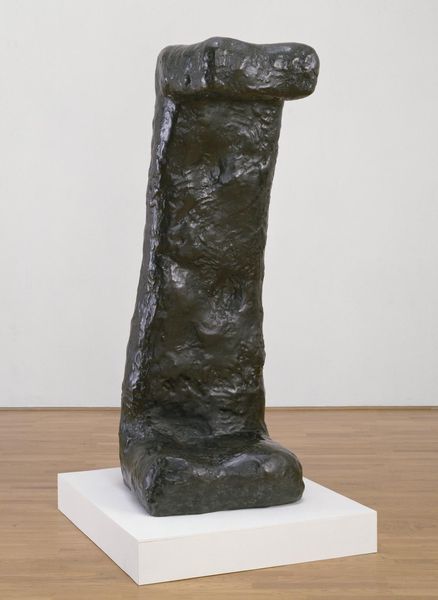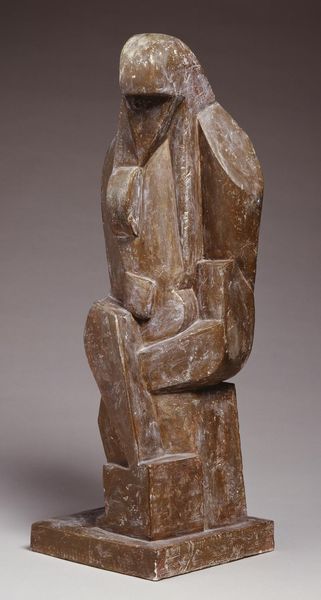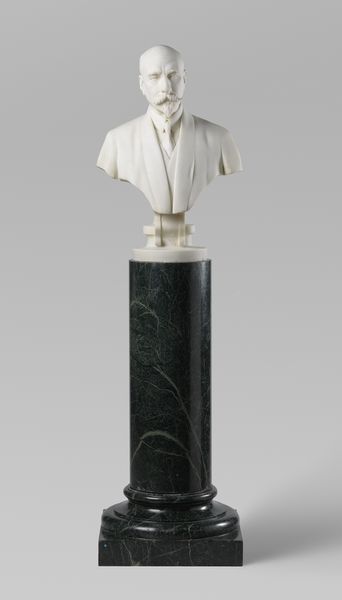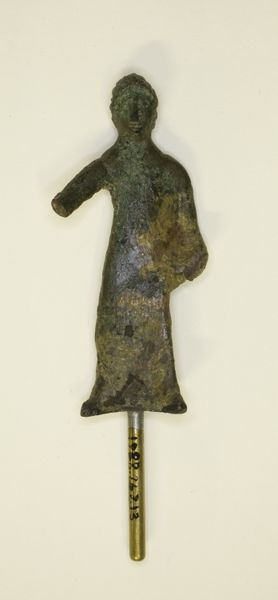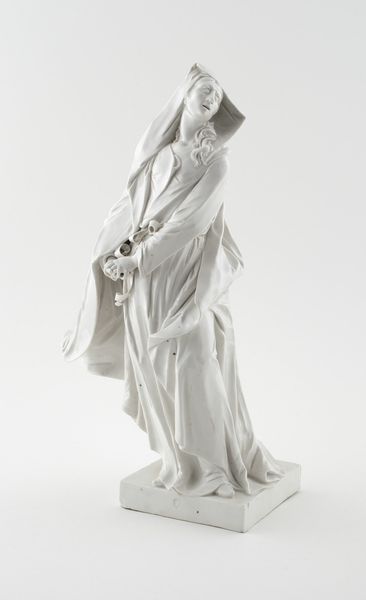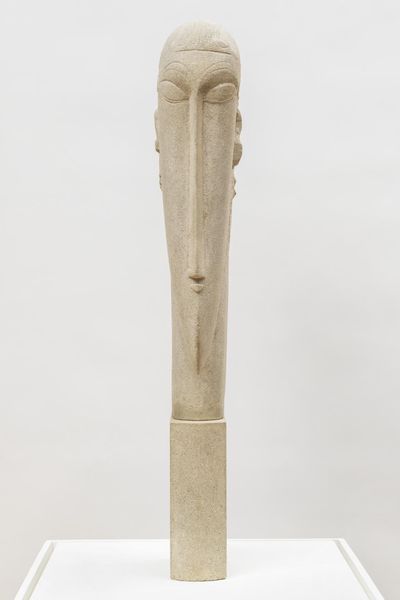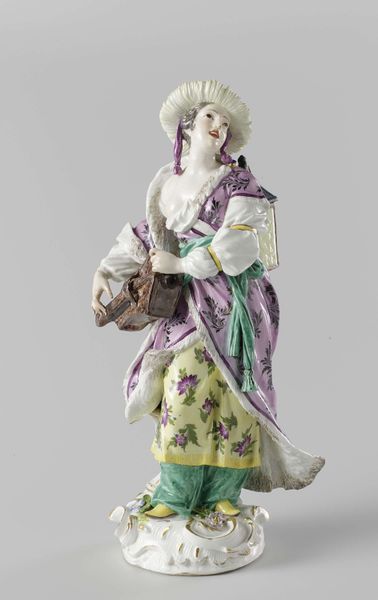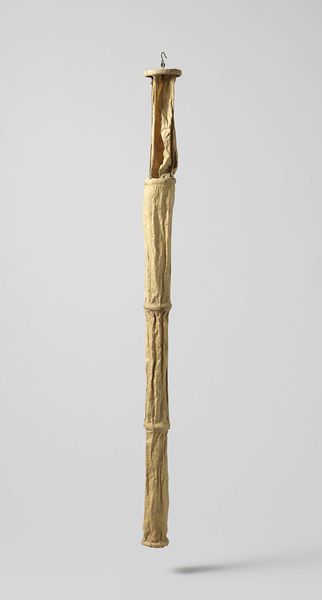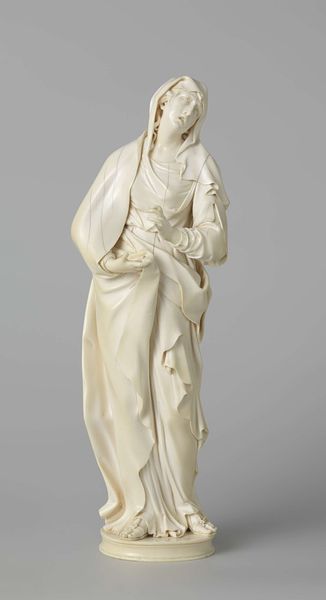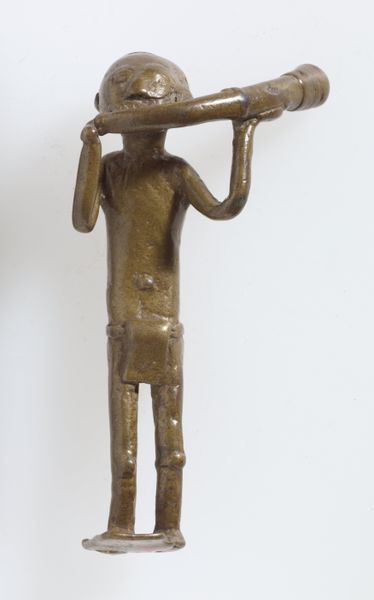![[no title] by Thomas Schütte](/_next/image?url=https%3A%2F%2Fd2w8kbdekdi1gv.cloudfront.net%2FeyJidWNrZXQiOiAiYXJ0ZXJhLWltYWdlcy1idWNrZXQiLCAia2V5IjogImFydHdvcmtzL2UwNGRjODNhLTIyYmYtNGVjNy05OGVhLWU2Y2UzYTdkOWQ4YS9lMDRkYzgzYS0yMmJmLTRlYzctOThlYS1lNmNlM2E3ZDlkOGFfZnVsbC5qcGciLCAiZWRpdHMiOiB7InJlc2l6ZSI6IHsid2lkdGgiOiAxOTIwLCAiaGVpZ2h0IjogMTkyMCwgImZpdCI6ICJpbnNpZGUifX19&w=1920&q=75)
Dimensions: displayed: 1910 x 260 x 260 mm
Copyright: © Thomas Schütte, DACS 2014 | CC-BY-NC-ND 4.0 DEED, Photo: Tate
Curator: This is a work by Thomas Schütte from the Tate collection. Editor: Immediately, I get a strong sense of the uncanny. It feels both familiar and deeply unsettling, like a childhood memory distorted by time. Curator: It certainly plays with contrasts. The figures, carved with such severity, are juxtaposed with the soft domesticity of the towel. And then you have this peculiar, almost playful, structure holding it all together. Editor: The blue tape forming an X on the towel—is that a symbol of censorship, or perhaps a commentary on the commodification of the body? What are these heads meant to represent? Curator: I see it as a commentary on the duality of human nature, perhaps even the artist's own internal struggles. The vulnerability of being exposed, yet protected by the ordinary. Editor: Interesting, I’d never considered that perspective. Ultimately, it’s a stark reminder of the discomfort and vulnerability inherent in the human condition. Curator: It’s a conversation starter, undoubtedly. An artwork that refuses to offer easy answers, and instead, provokes more questions.
Comments
Join the conversation
Join millions of artists and users on Artera today and experience the ultimate creative platform.
tate 6 months ago
⋮
This is one of three sculptures in Tate collection (see Tate T07018 and T07019) which are part of a larger group collectively titled United Enemies 1993-4. Schütte made eighteen similar sculptures each comprising a pair of small male forms bound together and sealed under a glass dome mounted on a cylindrical pillar. He modeled the figures’ heads by hand in coloured fimo, a modeling compound sold in toy shops. The bodies are stuffed rags swaddled on a tripod of doubled beechwood dowel sticks. Schütte bound them in pairs with masking tape and medical sticking plaster. Each couple stands on a shallow wooden plinth set on a tall section of terracotta-coloured plastic drainpipe. Some are trapped facing towards each other; others look away. The figures have bald heads and deeply incised features; their caricatured expressions are reminiscent of the ‘character head’ busts created in the late eighteenth century by Austrian baroque sculptor Franz Xaver Messerschmidt (1736-93). The figures in this sculpture are individually clothed in torn cotton fabric. The shorter character is wrapped in a piece of blue cloth. A piece of masking tape around his waist secures a yellow toothbrush to his side. His head is marbled pale blue and white with darker blue eyes. He wears a white plastic spray can lid with a small round red sticker on the front as a hat. His partner is wrapped in a fragment of striped yellow fabric bound around the neck and waist with string. His head and prominent neck are opaque white and his eyes are deep red. Schütte photographed the sculptures’ heads and shoulders close up against a black background and under a bright light. He created a portfolio of ten offset lithographs in an edition of thirty-five from the photographs (see Tate P77752-P77761) subtitled ‘A Play in Ten Scenes’, referring to the theatre of public life. The sculptures were initially installed with the prints, resulting in disorientating disjunctions in scale.
